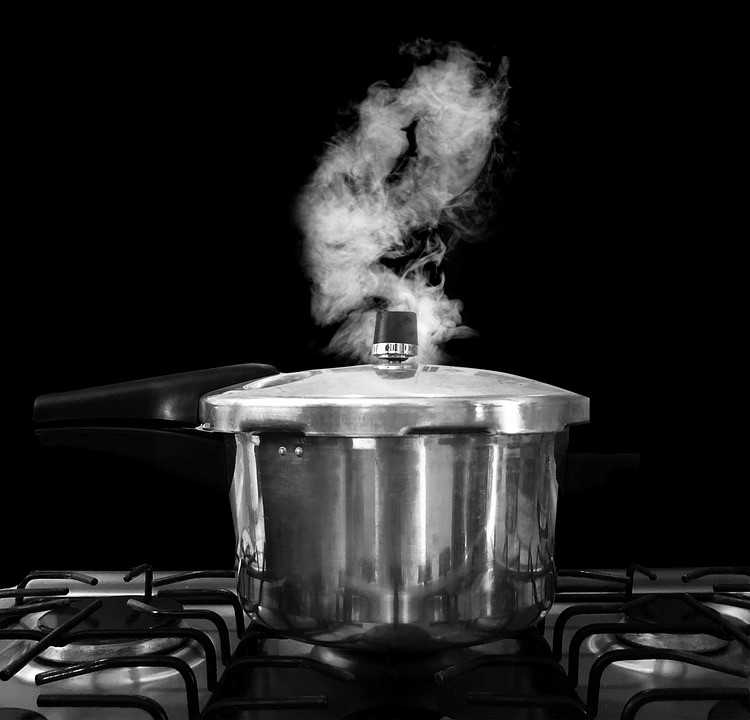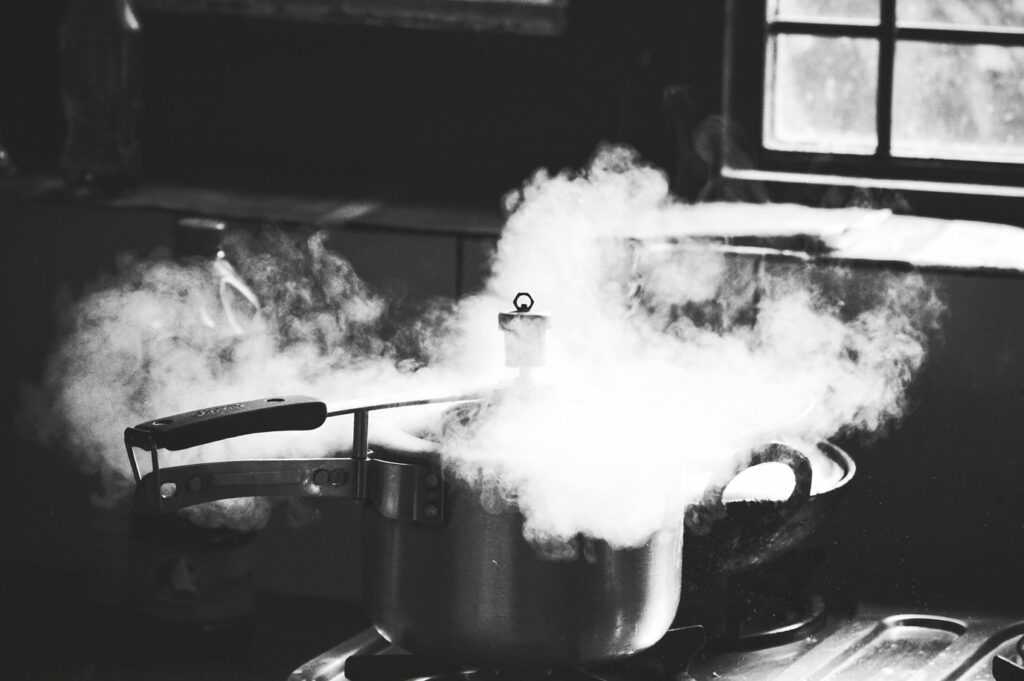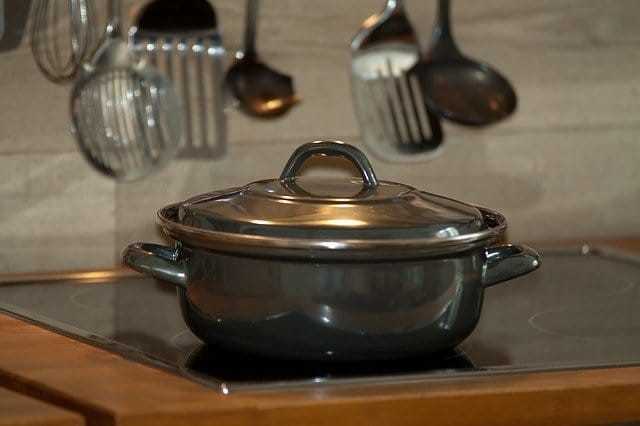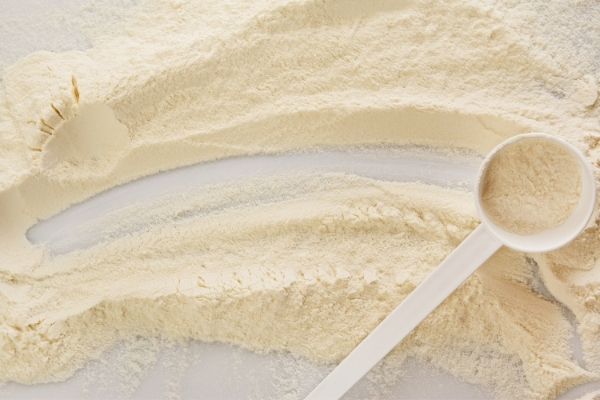A pressure cooker, as it looks, is an air-tight pot, in which food is cooked with the help of steam pressure and heat. The lid of a pressure cooker is fitted with a rubber gasket, which, when locked into place, forms an airtight seal, raising the pressure of the steam inside.

Here is the science behind the working of a pressure cooker:
- Pressure cooking always requires liquid (i.e. water)
2. Water normally boils at 100deg C or at normal air pressure (i.e. at sea level). At this level, no matter how much heat is supplied to the water, the temperature will not go above 100deg C.
3.When we go higher than sea level (e.g. a mountain), the air pressure is lower, hence water boils at a lower temperature. This means cooking takes longer, because now it is taking longer for the food to reach the internal temperature required to cook it.
4.Conversely, if we go lower than sea level, air pressure is higher and temperature at which water boils is much higher temperature, which means cooking is much quicker.
5. In a pressure cooker, once the airtight lid is snapped in, the steam from the liquid builds up the pressure to a maximum of 15 psi, raising the water’s boiling point. Now the same water that normally boils at 100deg C is much hotter.
6. As a result of cooking at higher pressure, the food is cooked more quickly, which saves time, something really needed in today’s fast paced world; saves energy by app. 70% as cooking time is shorter; and actually helps in preserving nutrition.
A study done on people in villages in the Himalayan region, found that, Traditional cooking methods are, with only 20% firewood efficiency, very poor in terms of biomass consumption. Shortening the cooking process is a great step towards fuel saving.
The pressure cooker is essential in the higher altitudes, because it creates a higher boiling temperature due to the steam pressure inside the cooking pot. The higher the altitude, the lower the atmospheric pressure and the related natural boiling temperature and hence, the longer it will take for food to cook.
When the traditional method and pressure cooking methods were compared, it was found that, the pressure cooker used only 17 minutes of gas while the traditional pot took 25 minutes (high flame to come to the boil) and 120 minutes (simmering time); in total 145 minutes. This meant that the pressure cooker used only 12% of the gas (or other cooking fuel such as firewood) as compared to the traditional cooking method.
Even when it comes to nutritional guidelines, by various nutrition bodies, there is absolutely nothing against the use of pressure cooking, and on the contrary, it has been preferred as a more faster, and energy saving way of cooking. For e.g. ICMR-NIN guidelines, have listed pressure cooking as just another method of cooking, out of many others.
For e.g. there have been many people on social media, especially in India, where the sudden new hot buzzword is “pressure cooker’ and why it’s very harmful to health, and the leading cause of various diseases, including cancer.

Let’s clear the 2 major myths:
- Myth 1: Pressure cooker will lead to loss of nutrients.
Reality 1: Firstly, any method of cooking, whatsoever, be it steaming, boiling, cooking in pressure cooker, or cooking in the open, will lead to loss of nutrients, when compared with raw foods.
When it comes to pressure cooking, studies have shown that, in pressure cooking, because the cooking time is much shorter, the loss of nutrient is minimal, as compared to prolonged cooking.
In this study, researchers measured Vitamin C retention in broccoli using five cooking methods. The researchers pressure cooked broccoli at high pressure for two minutes and found that 92% of the vitamin C was retained compared to 78% retention for conventional steaming.
Boiling and steaming caused significant vitamin C losses, 34% and 22%, respectively, while with the other treatments [pressure cooking, microwaving and microwave pressure cooking] more than 90% retention was observed.
Studies, as early as those done in 1949, have shown no more loss of nutrients through pressure cooking, than any other method of cooking.
In fact, more vitamins and minerals are retained by pressure cooking vegetables as opposed to boiling, steaming & microwaving. Saving and re-using the cooking liquid ensures the highest vitamin retention.
2. Myth 2: Pressure cooking causes cancer
Reality 2: there is absolutely no link or even a single evidence of any kind of cancer with pressure cooking. In fact, dry cooking, especially when food is exposed to direct heat, for a prolonged period of time, is linked to production of carcinogens.
A classic example would be red meat. Studies have shown that, barbecued meat is associated with the formation of the highest concentrations of heterocyclic aromatic amines (HAAs) & polycyclic aromatic hydrocarbons (PAHs), followed by fried meat and roasted red meat. Time of cooking has a great role in the HAAs production. Thus meat cooked for extended period mainly at higher temperatures contains a higher concentration of HAAs, which is why very well cooked meat is associated with cancer risk.
There is also a scare of aluminium used in pressure cooker, which can lead to cancer and development of neurodegenerative diseases. But, even if there is a negative belief against the use of aluminium in cookware, you have an option to choose from other metals.
For e.g. pressure cooker is made from aluminium, stainless steel and Anodized. Hard anodized cookware is basically aluminium cookware that is created through the electrochemical process where aluminium is fused together with non-stick coating. This type of cookware keeps the metal from reacting with acidic foods and provides a hard, smooth surface that is very durable.

When it comes to the comparison between the 3 types of pressure cookers. Each type has its own pros and cons. You can choose between stainless steel and anodized options.



